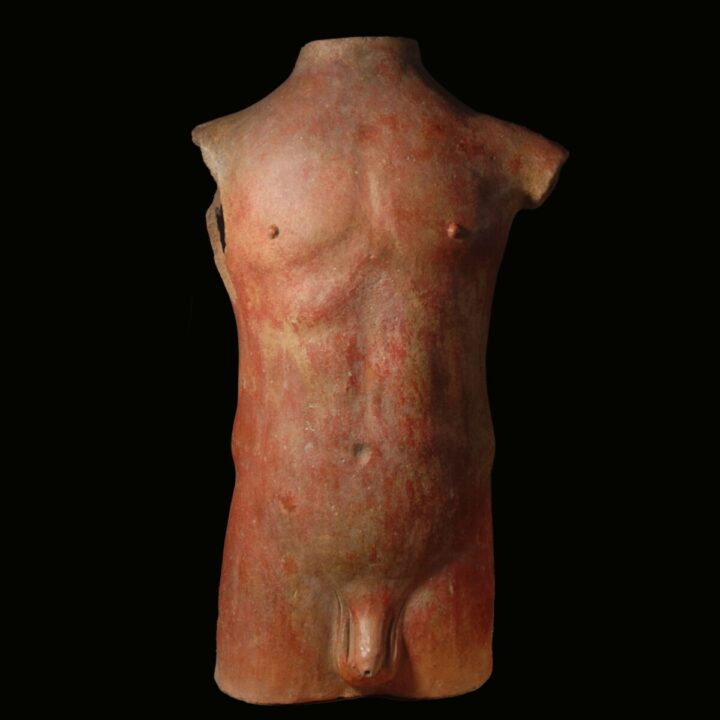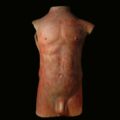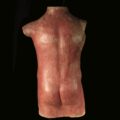Life size Etruscan Terracotta Votive Torso of a Young Man
Culture: Etruscan
Period: 3rd-2nd century B.C.
Material: Terracotta
Dimensions: 57 cm high
Price: Sold
Ref: 4217
Provenance: From the New York collection William Froehlich, 1970s. Thence in the collection of Lewis Cullman, New York. In 1991 with Atlantis Antiquities in New York. From there sold to France. In 2012 with Pierre Bergé auctions on 22 November 2014, lot 225. Accompanied by a French antiquities passport.
Condition: A missing part on the right arm set, otherwise wonderfully preserved.
Description: Anatomically masterly formed, life size terracotta torso of a young man. The hollow body with fine muscles and bones is shaped to the arm- and leg set and served as a votive object to the gods. In the Etruscan religion anatomical objects such as the present one were left as offerings to thank the gods for healing certain ailments. The votive had the form of the affected body part. Arms and legs, ears, but also intestines or female organs, such as the uterus were modelled in clay, burnt and then offered in the temple. Torsos were either depicted in the ideal state – like the present example – or with a cut through the stomach that revealed the inner organs. See for our type the torso in the British Museum with the Registration Number 1834,1011.1. The object is self-standing.





